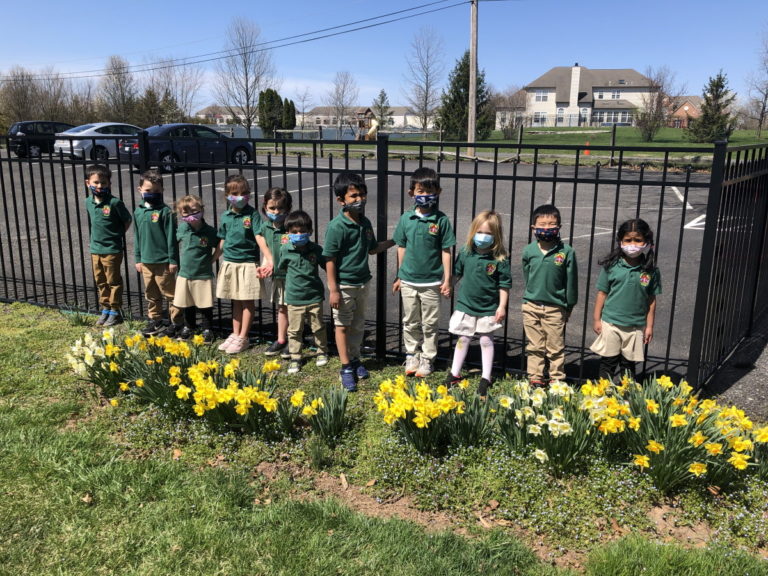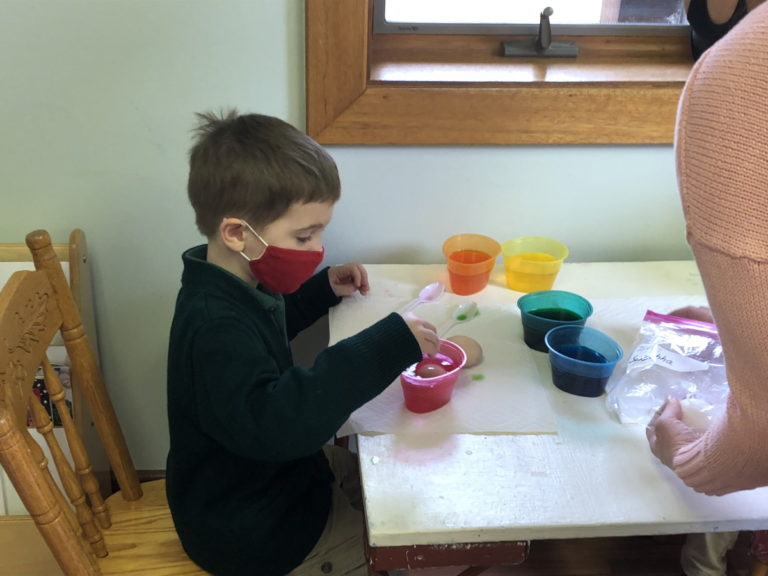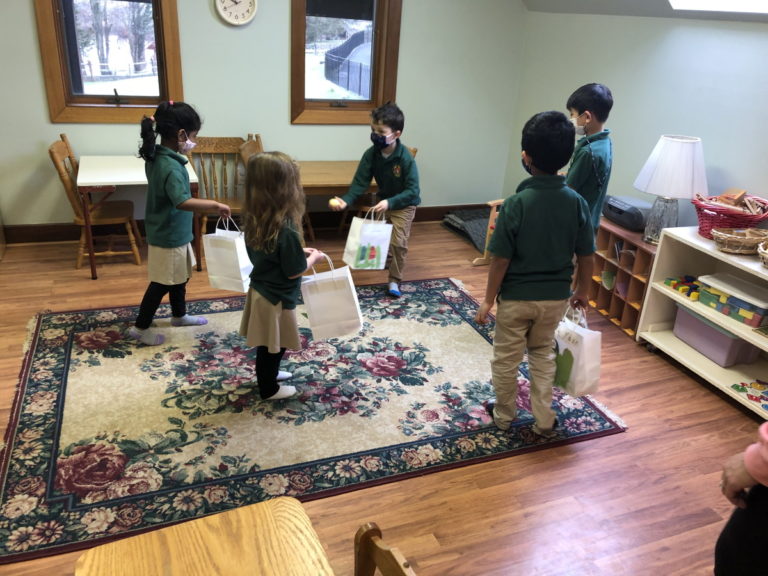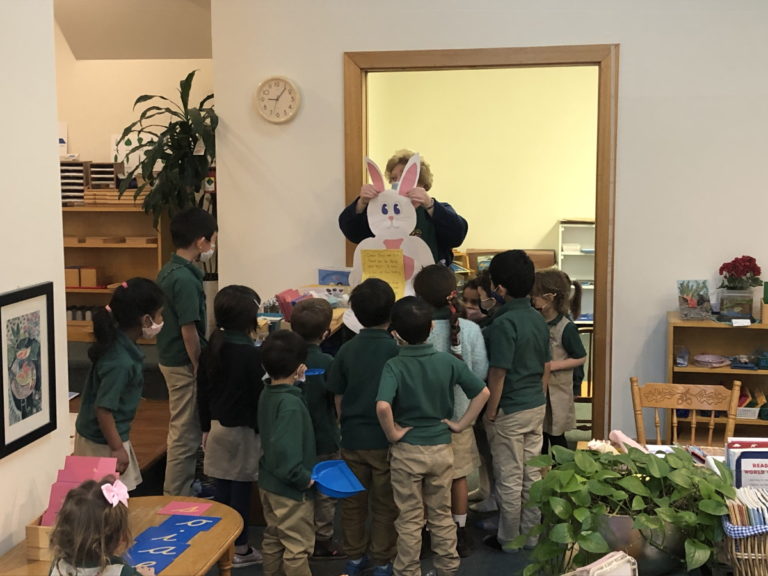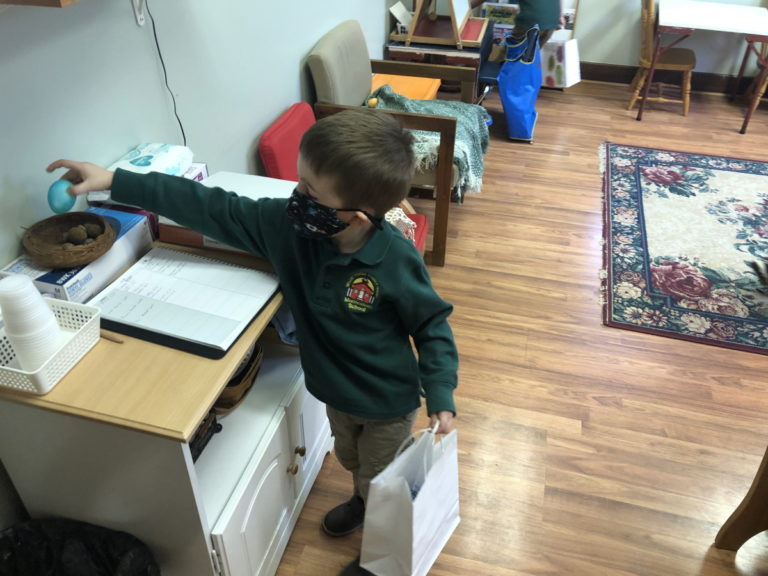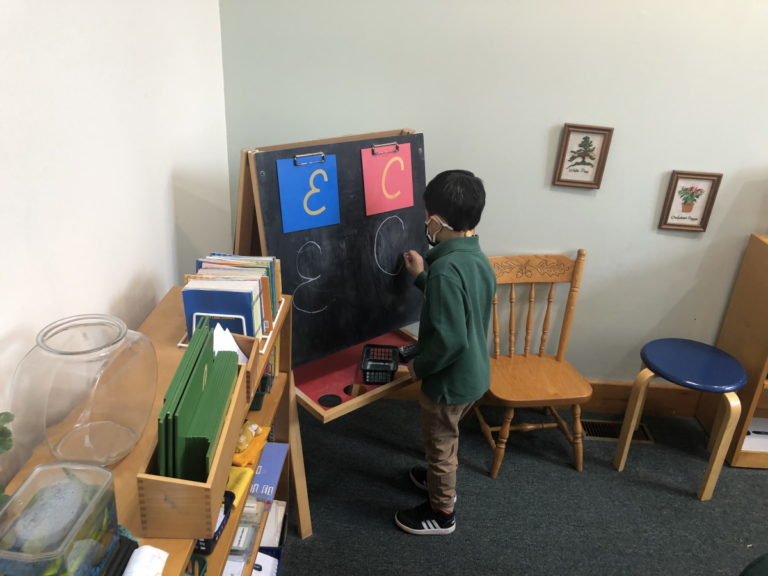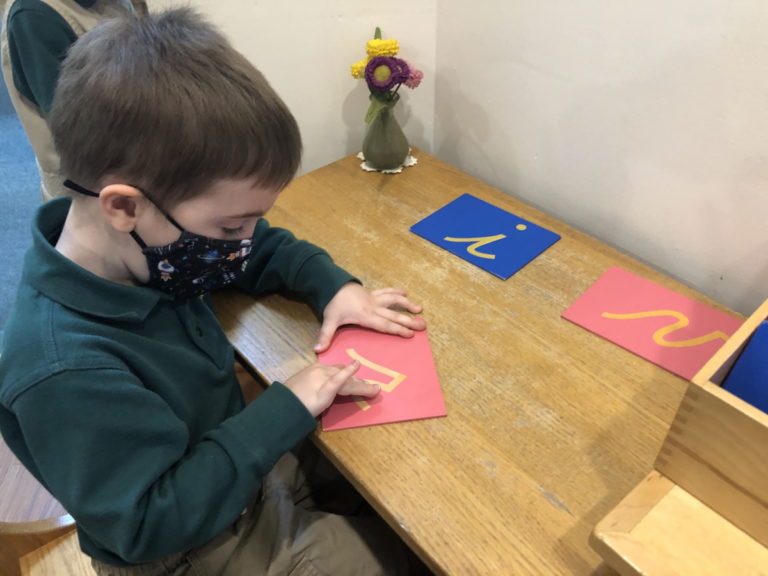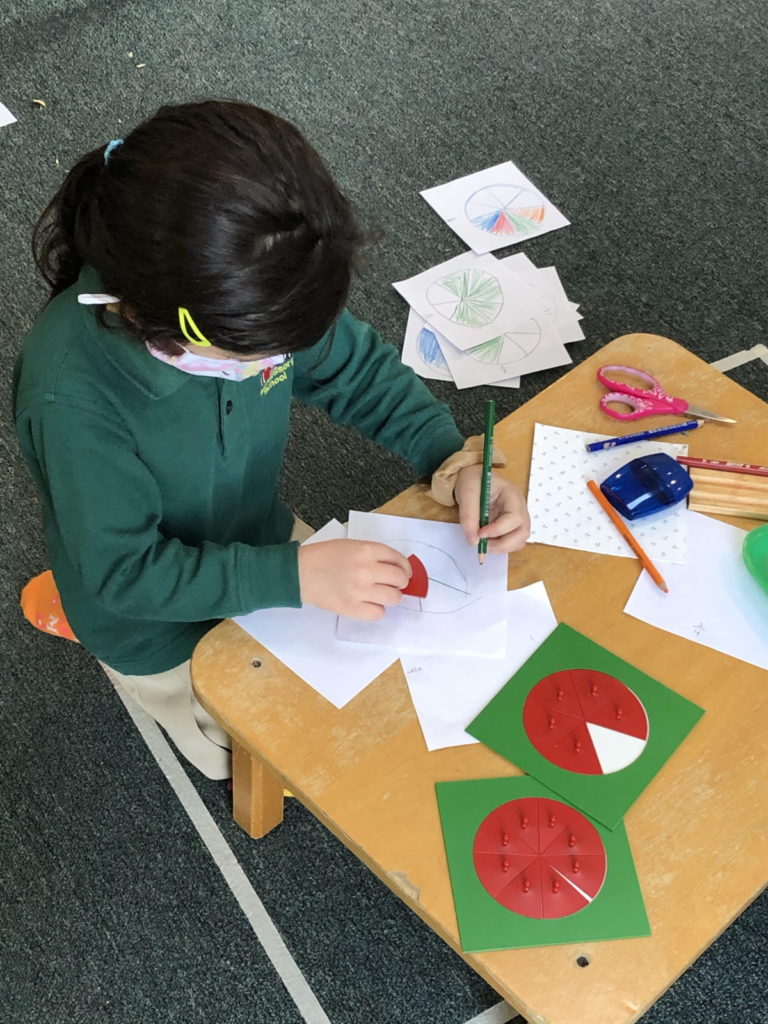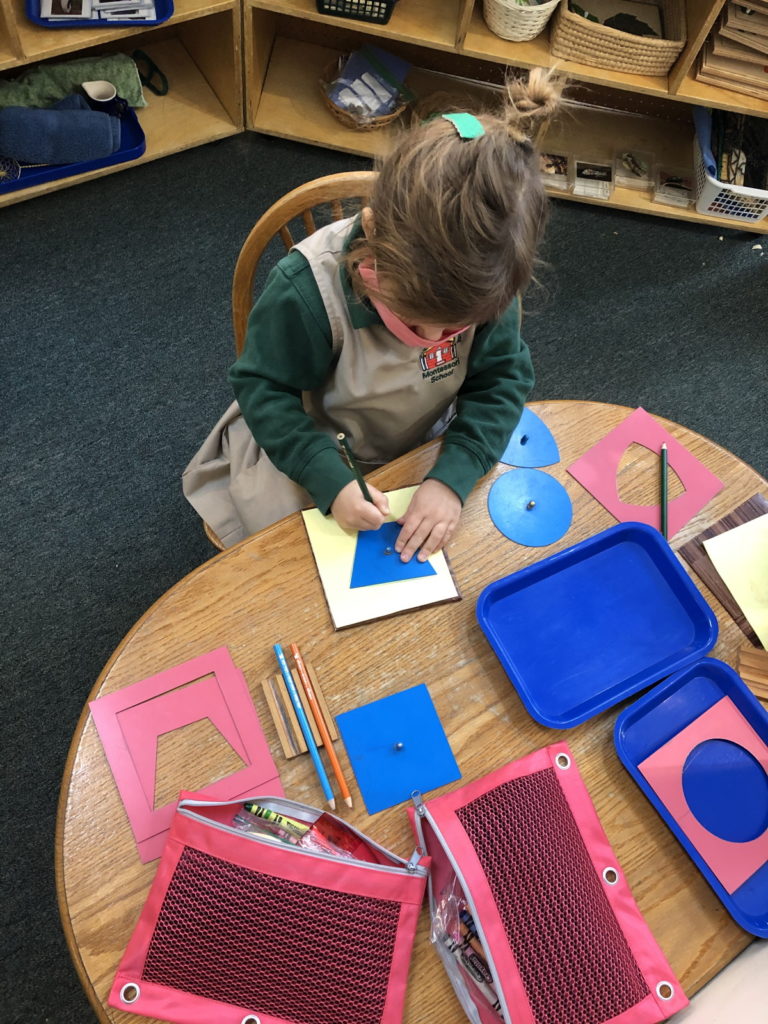Our spring events are extremely exciting for the children from creating art crafts and going on spring nature walks to preparing for the Easter holiday by dying our eggs, writing a letter to the Easter bunny, reading a letter from the Easter Rabbit, and going on an egg hunt.
We want to give a great big hug and thank you to Mrs. Recigno for helping the children with all of the Easter events. Our spring flowers have also arrived and the children just love smelling them and discovering how they are designed as they observe them.
Learning to Write Part One
Children learn to write in very special ways in a Montessori program. In order to write, a child must develop a two-folded skill. They must commit to memory the shapes of the letters and their corresponding sounds, and they must develop the muscular skills necessary for using the pencil with control.
To clearly clarify these skills, let’s take a careful look at what happens when either of the above skills is not completely perfect. A child may wish to write the word “pig”. He may have good control of his writing hand, but his perception of the shapes of the letters is hazy. Therefore, he may actually write the word “dig” instead.
For a child to try to acquire both aspects of this skill at the same time can be discouraging and even frustrating. It is extremely difficult for the child to try to learn the path for making the letters at the same time that he is trying to learn how to move the pencil with control.
Many of the materials that Dr. Montessori designed offer the child the opportunity to learn the shapes and sounds of the letters in a way that is completely independent of his perfection of the motor skill. Therefore, the child in our classroom learns to write not by writing so to speak at first, but by performing a number of purposefully structured activities that prepare him both indirectly and directly for success in handwriting.
Sandpaper Letters
Let us take a look at the Sandpaper Letters which are introduced to the child very early in this process for writing. The child learns the alphabetical symbols by using these uniquely designed letters. Each letter of the alphabet is cut out of sandpaper and mounted on individual boards. The vowels on blue boards and the consonants on pink.
The teacher shows the child how to trace the letter with two fingers following the same direction in which the letter is normally written. Using two fingers helps prepare the first part of the pincer grip that occurs once the child holds a pencil.
When the child is learning to use these letters they give the child a three-fold impression. The child sees the shape, he feels the shape, and he hears the sound of the letter which the teacher repeats when introducing it. The fact that the letter is made of sandpaper, rather than just ink, invites the child to trace its shape. This is an important step in learning to write. The repetition of this exercise fixes the path of each of the letters in the child’s muscular memory.
Phonetic Sounds
The child learns the phonetic sounds of the letters before he learns their names used in the alphabetical sequence. The phonetic sounds are given first because these are the sounds he actually hears in words. For example, a child can hear “sss” at the beginning of the word “stop“. He cannot hear the alphabetical name of “s” in this word.
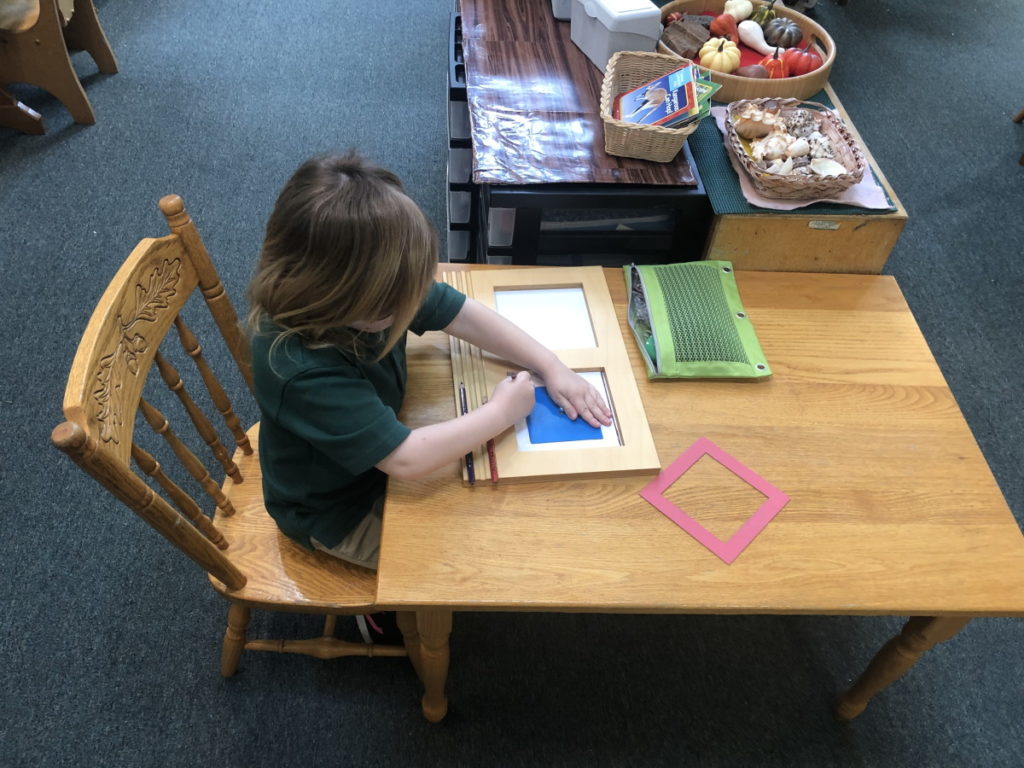
The child first becomes aware of these phonetic sounds when the teacher introduces the consonants with the Sandpaper Letters. For example, when presenting the “m“, the teacher makes a humming sound rather than saying “em“. The teacher then suggests words like “mommy” or “muffin” that begin with this sound. The child then repeats the sound and usually adds additional words in which this same sound is used, like “man” or “milk“.
In the first introductions of vowels, the teacher gives the short vowel sounds such as those at the beginning of the words, apple, egg, insect, ostrich, and umbrella. As soon as the child learns a few vowels and consonants, he is ready to begin constructing three-letter words that have a short vowel sound.
Metal Insets
The metal insets help the child learn to control a pencil by filling in outlines, an activity that does not weary him because he enjoys it. Each inset represents a different geometric shape. After selecting a figure and tracing it on paper, the child fills in the outline with a colored pencil of his own choosing.
At first, the child’s strokes are erratic and often extend beyond the outline. By degrees, they become more accurate and uniform. Progress in muscular control can be noted by comparing the child’s designs from week to week and from year to year. Eventually, the child makes more intricate designs by superimposing two or three other shapes on the original figure. When colored, this effort resembles a stained-glass window.
